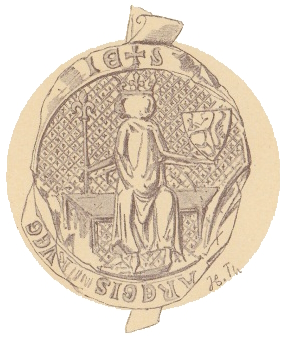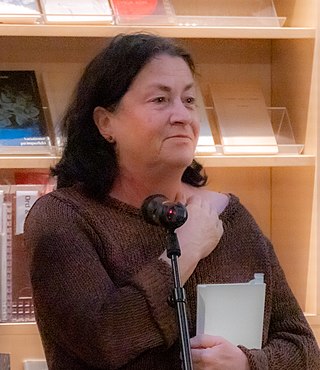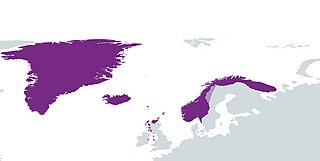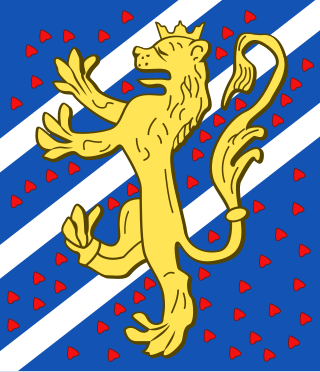| |||||
| Centuries: | |||||
|---|---|---|---|---|---|
| Decades: | |||||
| See also: | List of years in Norway | ||||
Events in the year 1326 in Norway.
| |||||
| Centuries: | |||||
|---|---|---|---|---|---|
| Decades: | |||||
| See also: | List of years in Norway | ||||
Events in the year 1326 in Norway.
Magnus, meaning "Great" in Latin, was used as cognomen of Gnaeus Pompeius Magnus in the first century BC. The best-known use of the name during the Roman Empire is for the fourth-century Western Roman Emperor Magnus Maximus. The name gained wider popularity in the Middle Ages among various European peoples and their royal houses, being introduced to them upon being converted to the Latin-speaking Catholic Christianity. This was especially the case with Scandinavian royalty and nobility.

Albert was King of Sweden from 1364 to 1389 and Duke of Mecklenburg-Schwerin from 1384 to 1412.

Magnus Eriksson was King of Sweden from 1319 to 1364, King of Norway as Magnus VII from 1319 to 1355, and ruler of Scania from 1332 to 1360. By adversaries he has been called Magnus Smek.

Haakon VI, also known as Håkan Magnusson, was King of Norway from 1343 until his death and King of Sweden between 1362 and 1364. He is sometimes known as Haakon Magnusson the Younger to distinguish him from his great-grandfather, Haakon V.

Valdemar Birgersson, also Waldemar, was King of Sweden from 1250 to 1275.

Knut Eriksson, also known as Canute I, was King of Sweden from 1173 to 1195. He was a son of King Erik the Saint and Queen Christina, who was a granddaughter of the Swedish king Inge the Elder.

Erik Magnusson, sometimes known as Erik XII, was King of Sweden and lord of Scania in 1344–1359. He was a co-ruler with his father, King Magnus Eriksson, from 1356 until his death in 1359.
Magnus Eriksson (1316–1374) was the King of Sweden from 1319 to 1364 and the King of Norway from 1319 to 1355.

Euphemia of Sweden was a Swedish princess. She was Duchess consort of Mecklenburg, heiress of Sweden and of Norway, and mother of King Albert of Sweden. (c. 1338-1412) .

Ingeborg of Norway was a Norwegian princess and by marriage a Swedish royal duchess with a position in the regency governments in Norway (1319–1327) and Sweden (1319–1326) during the minority of her son, King Magnus Eriksson. In 1318–1319, she was Sweden's de facto ruler, and from 1319 until 1326, she was Sweden's first de jure female regent. Her role in northern European history is considered of major importance.
Beatrix of Bavaria was Queen of Sweden as the wife of King Eric XII of Sweden (1339–1359) who co-ruled Sweden with his father King Magnus Eriksson.
The Treaty, Truce or Second Peace of Novgorod was concluded in March 1557. It ended the Russo-Swedish War (1554–1557), a series of skirmishes in the Viborg and Oreshek areas resulting from Swedish attempts to keep Livonia, where the Teutonic Order's rule had collapsed, out of the Russian sphere of influence.

Magnus Lennart Eriksson is a Swedish professional footballer who plays as a midfielder for Djurgårdens IF in Allsvenskan.
Events in the year 1319 in Norway.
Events in the year 1611 in Norway.
Events in the year 1612 in Norway.

Ann Jäderlund is a Swedish poet and playwright. She made her literary debut in 1985 with the poetry collection Vimpelstaden. Other collections are Snart går jag i sommaren ut from 1990 and I en cylinder i vattnet av vattengråt from 2006. She was awarded the Dobloug Prize in 2004. Esa-Pekka Salonen used her work Two Poems to Songs for a choral work in 2002.
Events in the year 1335 in Norway.

The term Norwegian Realm and Old Kingdom of Norway refer to the Kingdom of Norway's peak of power at the 13th century after a long period of civil war before 1240. The kingdom was a loosely unified nation including the territory of modern-day Norway, modern-day Swedish territory of Jämtland, Herjedalen, Ranrike (Bohuslän) and Idre and Särna, as well as Norway's overseas possessions which had been settled by Norwegian seafarers for centuries before being annexed or incorporated into the kingdom as 'tax territories'. To the North, Norway also bordered extensive tax territories on the mainland. Norway, whose expansionism starts from the very foundation of the Kingdom in 872, reached the peak of its power in the years between 1240 and 1319.

The First Swedish–Norwegian union, was a personal union of the separate kingdoms of Sweden and Norway together with Norway's overseas colonies .The union was founded by King Magnus IV of Sweden in 1319 and dissolved in 1355, briefly re-uniting in 1362 until 1365.